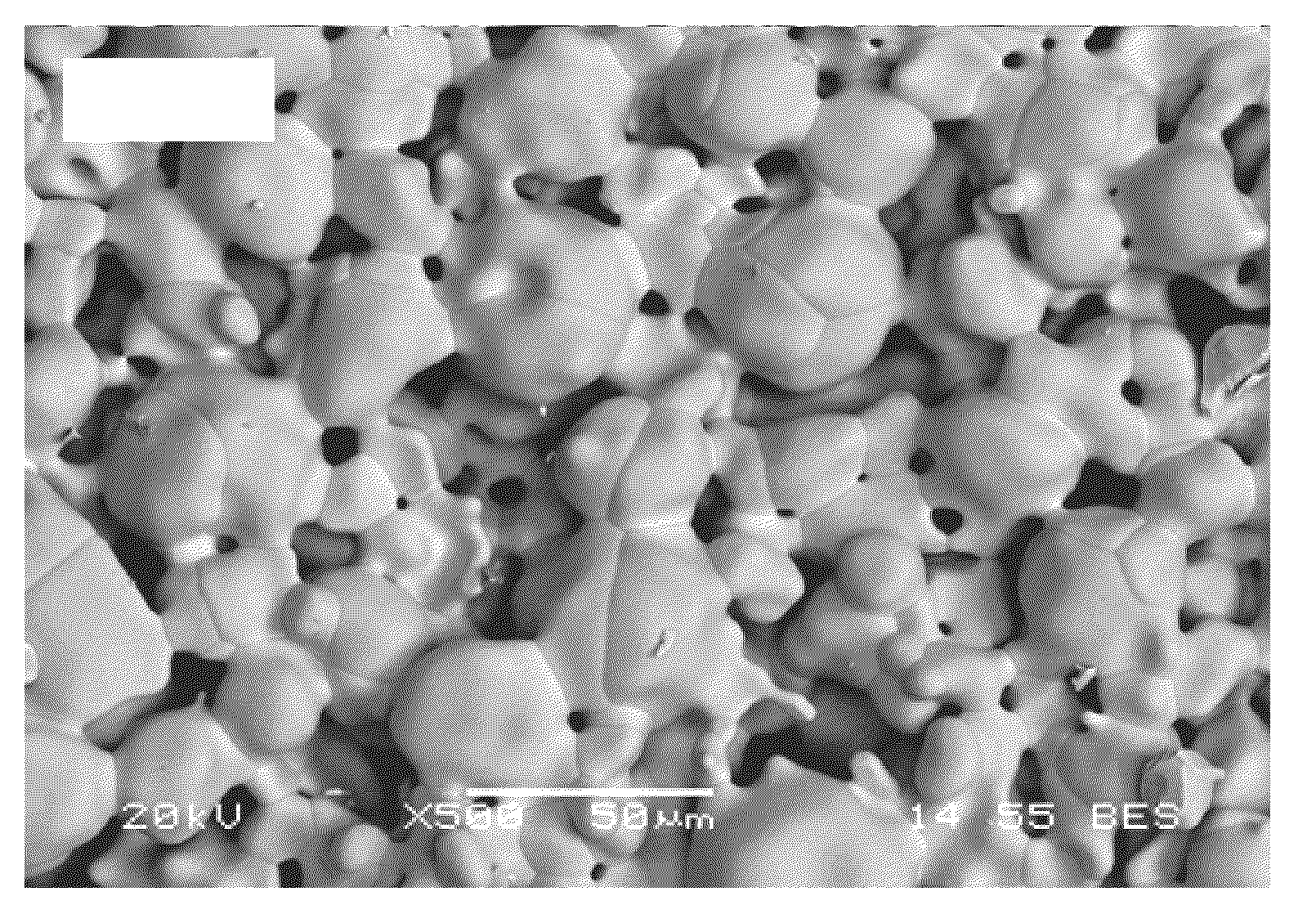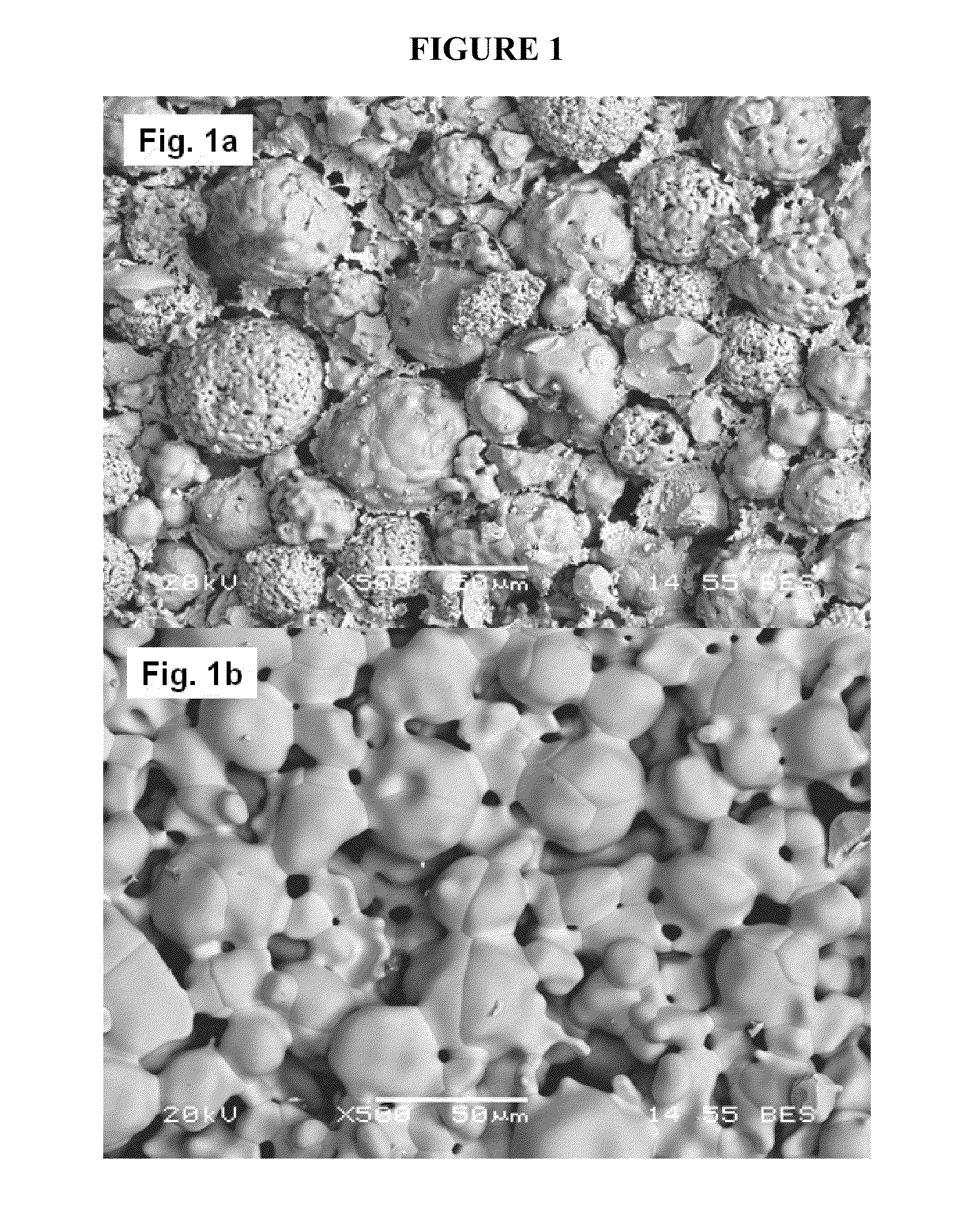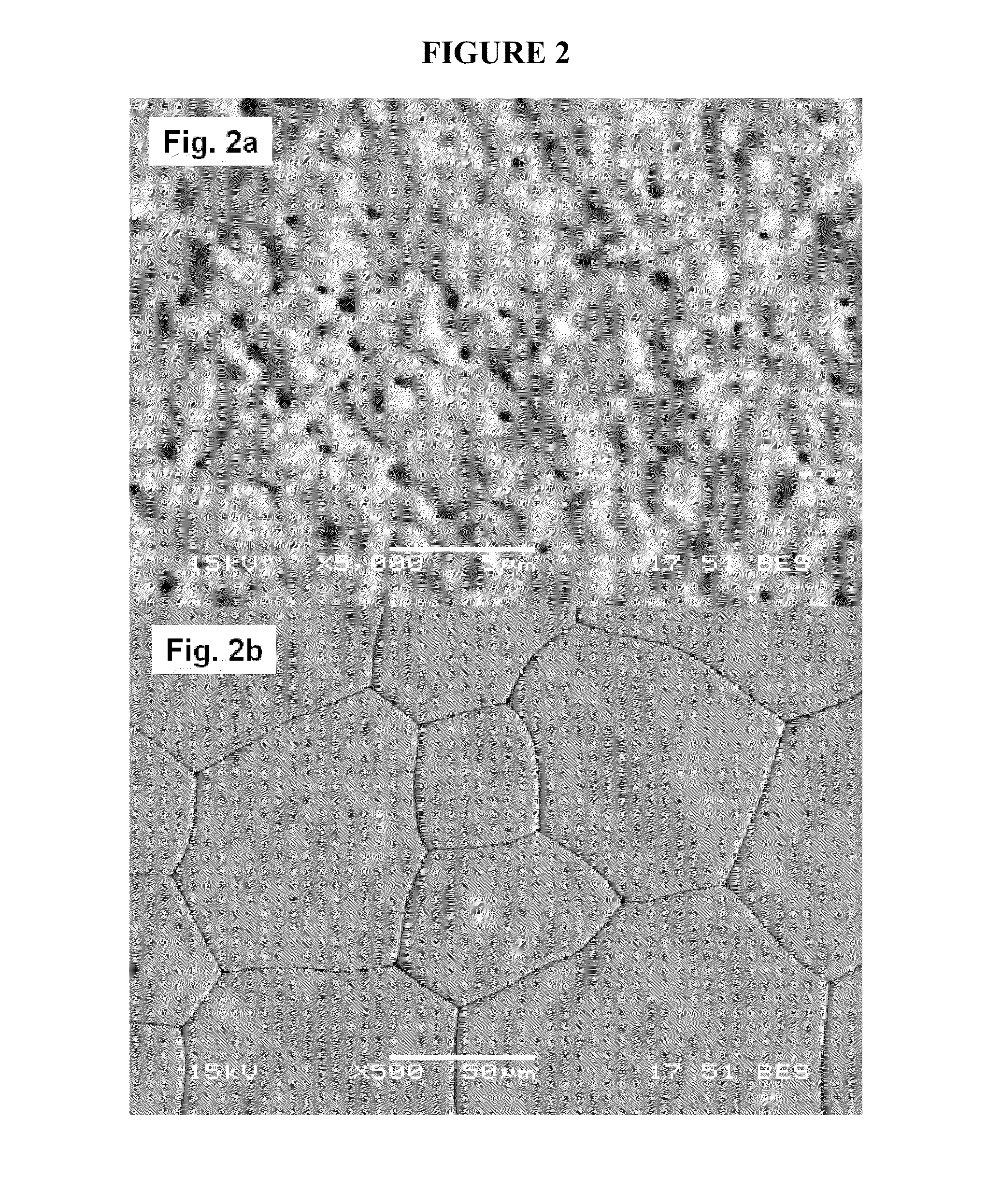Heat Stable Formed Ceramic, Apparatus And Method Of Using The Same
a ceramic and stable technology, applied in the field of ceramic components, methods, and thermal reactor apparatus, can solve the problems of high temperature reaction and process typically require more complex, specialized equipment, and high cost, and high temperature cracking process, etc., to achieve the effect of equipment, and reducing the cost of equipmen
- Summary
- Abstract
- Description
- Claims
- Application Information
AI Technical Summary
Benefits of technology
Problems solved by technology
Method used
Image
Examples
example 1
ILLUSTRATIVE EXAMPLE 1
Close Packing of Bimodal Grains
[0093]Table 4 depicts an exemplary multimodal grain distribution including a coarse grain mode of partially stabilized zirconia and a fine grain mode of more-stabilized zirconia, used for producing a stabilized zirconia matrix comprising a bimodal grain distribution. The coarse grit (H. C. Starck's Amperit® 827.054) is an agglomerated and sintered powder which is produced by spray drying of a suspension consisting of fine powders and organic binder and subsequent sintering. The fine grit (Tosoh TZ8Y) is produced by a hydrolysis process, which ensures uniform dispersion of yttria in zirconia and fine particle size.
TABLE 4CompanyGradeChemistry (wt %)SizeH.C.Amperit ®ZrO2: Balance, Y2O3: 7.0~9.0%,21~65 μmStarck827.054HfO2: 2.0%, Al2O3: 0.2%,(SphericalFe2O3: 0.3%, SiO2:Particle)0.5%, TiO2: 0.4%TosohTZ8YZrO2: Balance, Y2O3: 13.3%,0.05~2.0 μmAl2O3: 0.1%, Fe2O3: 0.01%,(CrystalliteSiO2: 0.02%, Na2O: 0.12%Size)
[0094]In the above example, 9...
example 3
ILLUSTRATIVE EXAMPLE 3
Close Packing with Multimodal Grain Distribution
[0117]The same coarse and fine grit materials of illustrative Example 1, that is, 90 vol % coarse grit of stabilized zirconia powder and 10 vol % of fine grit of stabilized zirconia powder, were mixed with organic binder for extrusion processing. The bimodal powder mixture was extruded to fabricate a green body in the size of about 0.55 mm thickness, 7.6 mm width, and 50 mm length. The extruded green body was dried and fired at 1500° C. for 2 hrs in an industrial kiln to fabricate a sintered body.
[0118]FIG. 3a of FIG. 3 illustrates an SEM image of the resulting sintered component (1500° C., 2 hrs) processed according to this example, wherein the legend bar represents 10 μm. In this image, substantially spherical coarse grits are in the D50 average grain size of about 30 μm and the D50 fine grits are in the average grain size of about 0.3 μm. The fine grits are beneficially distributed throughout the various pores ...
PUM
| Property | Measurement | Unit |
|---|---|---|
| Temperature | aaaaa | aaaaa |
| Temperature | aaaaa | aaaaa |
| Fraction | aaaaa | aaaaa |
Abstract
Description
Claims
Application Information
 Login to View More
Login to View More - R&D
- Intellectual Property
- Life Sciences
- Materials
- Tech Scout
- Unparalleled Data Quality
- Higher Quality Content
- 60% Fewer Hallucinations
Browse by: Latest US Patents, China's latest patents, Technical Efficacy Thesaurus, Application Domain, Technology Topic, Popular Technical Reports.
© 2025 PatSnap. All rights reserved.Legal|Privacy policy|Modern Slavery Act Transparency Statement|Sitemap|About US| Contact US: help@patsnap.com



